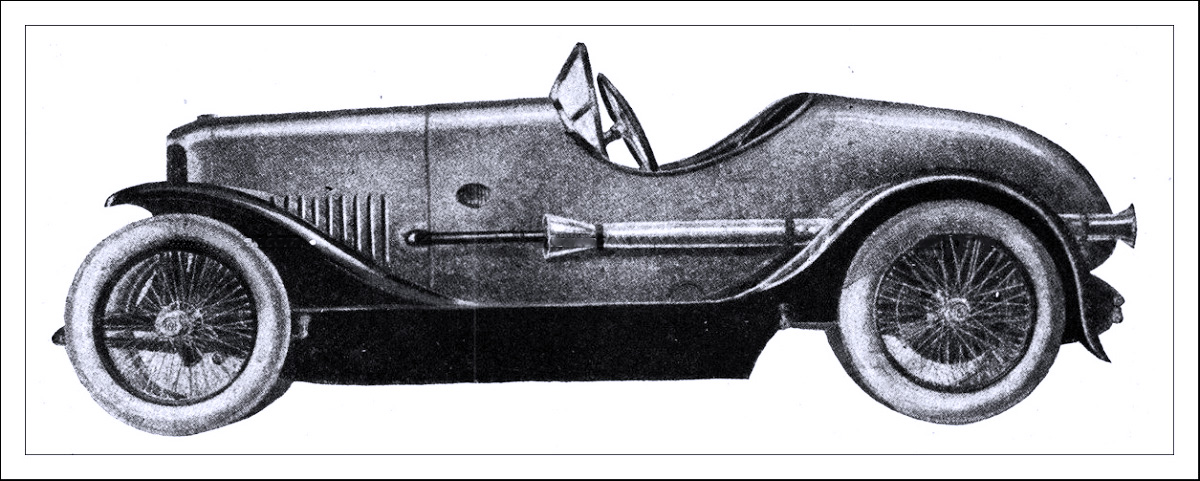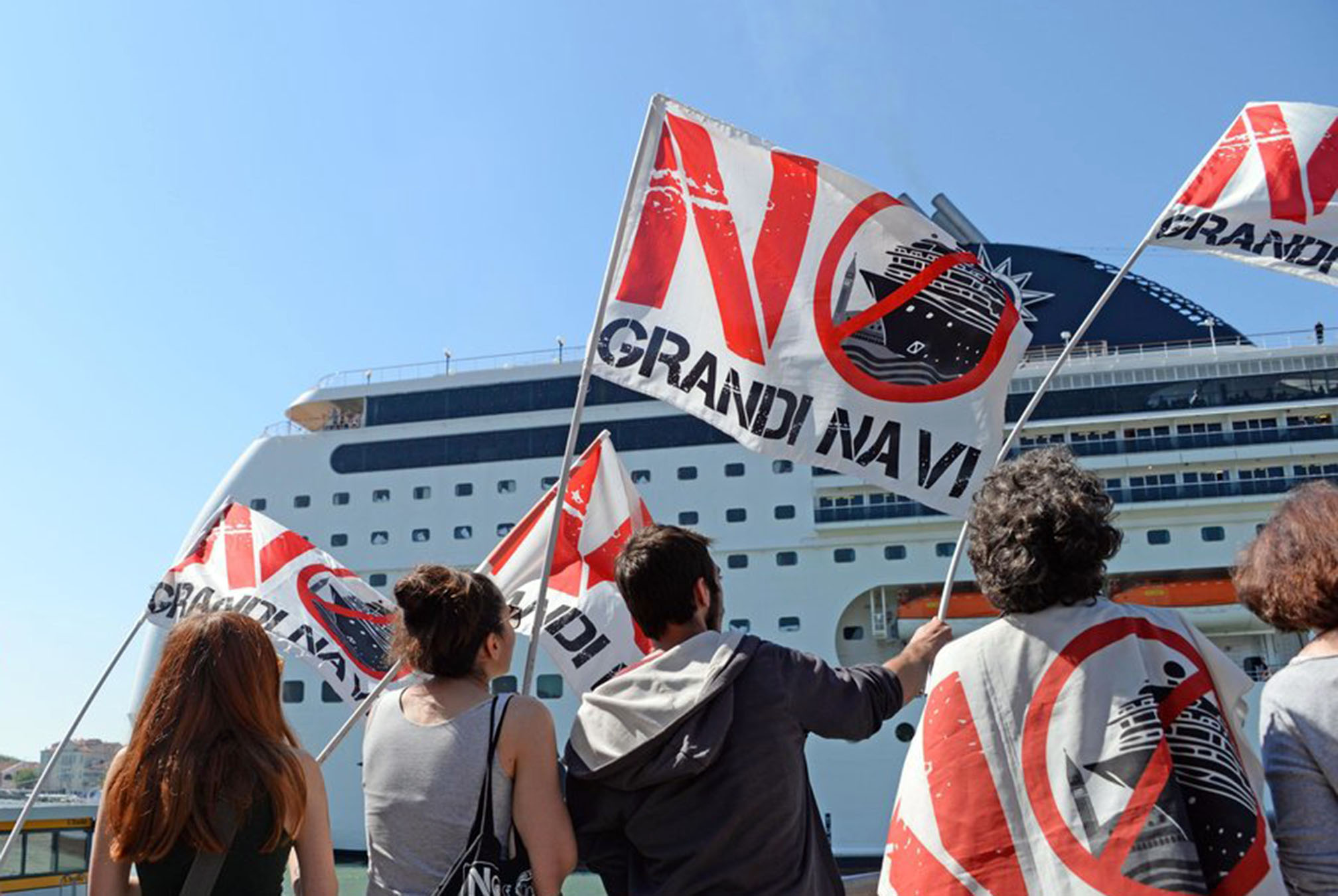Part 90 – The Final Feature
By David Cavaliere
During the past two years this series has covered many well-known manufacturers in multi-part series, such as Ferrari, Lamborghini, Lancia and Maserati, while also providing the history of much smaller Italian car manufacturers such as Bandini, Diatto and Ermini. We have examined the works of the great coachbuilders – the carrozzeria with Boano, Boneschi, Colli, Castagna, Fantuzzi and many more. There have been geniuses – such as Giugiaro and Bizzarrini and there have been the unfulfilled promise of Cisitalia and incredible successes of Fiat. The series has even veered off a bit to cover vehicles of the two–wheel variety including Ducati, Moto Guzzi and Vespa.
I have enjoyed bringing this series to you and hope that you, our readers have gained an appreciation for the creativity and artistry of the Italian automotive industry. In this last part of the series I would like to mention a few of the companies that didn’t receive a feature article.
Dallara Automobili is a chassis manufacturer for various motor racing series and is notable for its near-monopoly in Formula Three since 1993. Dallara also produces the chassis used by the IndyCar Series, Formula 2, Formula E and ADAC Formel Masters and is one of the manufacturers in the Grand-Am Rolex Sports Car Series. It manufactures the chassis used by Haas F1 team. The company was founded by designer Gian Paolo Dallara in 1972 in Varano de’ Melegari (near Parma, Italy) and started building chassis for sports car racing and hill climbing. In 2017, Dallara presented its first road car, “Dallara Stradale,” on the occasion of Gian Paolo Dallara’s 81st birthday.
Fabbrica Automobili Sport Torino Ing (FAST) was an Italian car manufacturer active between 1919 and 1924. The company’s founder, Arturo Concaris, introduced its first model, aptly named Tipo Uno after the War. It was an expensive sports car featuring a four-cylinder aluminum engine that developed an impressive 80 hp. Due to financial problems, he sold the company to Alberto Orasi in 1923. The company closed its doors the following year.
In 1921, Amedeo Peano, an engineer from Turin, took over the Brescian factory Marzoli & Magri and founded FIAM with the intent of creating a car equipped with a two-cycle engine. After creating a prototype, the company moved to Turin. The car was slow to enter production and within weeks of launching delivery, the economic crisis of 1927 brought an end to the company.
The Ceirano brothers, Giovanni Battista, Giovanni, Ernesto and Matteo, were influential in the founding of the Italian auto industry, being variously responsible for Ceirano; Welleyes (the technical basis of F.I.A.T.); Fratelli Ceirano; S.T.A.R. / Rapid (Società Torinese Automobili Rapid); SCAT (Società Ceirano Automobili Torino); Itala and S.P.A. (Società Piemontese Automobili). Giovanni’s son Giovanni “Ernesto” was also influential, co-founding Ceirano Fabbrica Automobili and Fabrica Anonima Torinese Automobili (FATA). Giovanni Ceirano.
- Ceirano Junior, later renamed in Fabbrica Torinese Automobili Junior, was founded in Turin by Giovanni Ceirano and active from 1905 to 1909. The company produced three car models that were both reliable and robust. The best car produced was the 28-40 hp – an 8-liter four-cylinder engine that developed 45 hp. It sold at a high price for the time. Financial difficulties led to the demise of the company.
Giovanni Bastista and Matteo Ceirano left F.I.A.T. in 1901 to found Fratelli Ceirano & C. In 1903, Matteo left to found ITALA. In 1904 Giovanni Batista Ceirano transformed Fratelli Ceirano & C. into Società Torinese Automobili Rapid, using the name Rapid as a trademark. The factory covered an area of over 500,000 square feet and employed 500 workers. It was soon producing 600 cars per day. By 1912, the company converted to the production into trucks and then to the manufacture of artillery shells for WWI.
Giovanni Battista Ceirano retired briefly in 1905, but came back into the automotive world in 1906 to form SCAT (Società Ceirano Automobili Torino). The company was active from 1906 to 1932 producing cars and military hardware during WWI. The company is notable for its racing success, having achieved three Targa Florio wins in total, with Giovanni’s brother Ernesto winning the 1911 and 1914 events.
S.P.A. (Società Piemontese Automobili) was founded in Turin by Matteo Ceirano and Michele Ansaldi. It was active between 1906 and 1926. In 1908, it merged with Fabbrica Ligure Automobili Genova (FLAG), which had been established in 1905 by investors in La Spezia, Liguria, Italy to produce large, prestigious, luxury vehicles. The new company, Società Ligure Piemontese Automobili was headquartered in Genoa while manufacturing in Turin. In 1923, it moved to Turin and in 1925 was taken over by Fiat.
La Meccanica Taraschi was founded by Berardo Taraschi after the Second World War and manufactured under the brands Urania, Giaur and Taraschi. It built tiny race cars for the lower levels of open-wheeled racing – Formula 2, 3 and Juniors. The cars were stable and light and had excellent driving qualities.
Prinetti & Stucchi was a small company that began manufacturing motorized tricycles and quadricycles at the beginning of the 20th century. Its Tipo 1 was a motorized tricycle designed by Ettore Bugatti. In 1900, Bugatti participated in the Targa Rignano driving a quadricycle. In 1901, the company was renamed Stucchi & Co, when Giulio Prinetti left to become the Italian Minister of Foreign Affairs. The reorganization also triggered Ettore Bugatti’s emigration to France where he established the Bugatti car works, which became one of the most prestigious names in the automotive world.
Siata (Società Italiana Auto Trasformazioni Accessori) was a tuning shop turned manufacturer. It was founded in 1926 by amateur race driver Giorgio Ambrosini. After World War II, the company began making its own sports cars under the Siata brand until its bankruptcy in the early 1970s. Production of the Siata’s first original design was the Siata Amica. Produced from 1948-1952, it was powered by a 22 hp Fiat 500 cc engine. Beginning in 1950, it began producing the Daina Series. Ultimately about 200 were produced, most through ’53. Its most significant model was the Siata 208S from 1953, featuring Fiat’s 2.0 liter V-8 engine. The car rose to prominence after actor and race car driver Steve McQueen purchased the BS523 model. McQueen reportedly re-badged the car with Ferrari emblems and dubbed the car his “Little Ferrari.”
Automobili Stanguellini was based in Modena and was founded by Vittorio Stanguellini. His family had a long involvement with automobiles by the time that Vittorio began his business of tuning and modifying Maserati, Alfa Romeo and Fiats for racing. He was a friendly rival of Enzo Ferrari in Modena beginning in the late 1920s. Vittorio formed Squadra Corse Stanguellini in 1938 and quickly found success when he modified a Maserati 6CM which took the overall victory at the 1938 Targa Florio. Stanguellini’s cars competed in countless sports car racing events, focusing on the 750 cc and 1100 cc classes. They were beautifully engineered cars, with light-alloy cylinder blocks, twin overhead cams and dual side-draught Weber carburetors. His 750 cc engine’s redline was 9,000 rpm and his car’s achieved many class victories in Europe during the 1950s. He built more than 100 Stanguellini Formula Juniors between 1958 and 1963. These single-seaters looked like scaled-down Maserati 250F. His final race car was the mid-engined Stanguellini Delfino. Using a Fiat 1100, it was always underpowered and did not achieve the success of its predecessor. After 1966, the Stanguellini family concentrated their efforts on tuning equipment and subcontract design, while also running their Modena Fiat dealership.
And thus concludes our 90 feature series on the History of the Italian Automobile. We hope that you have enjoyed this extensive series!





